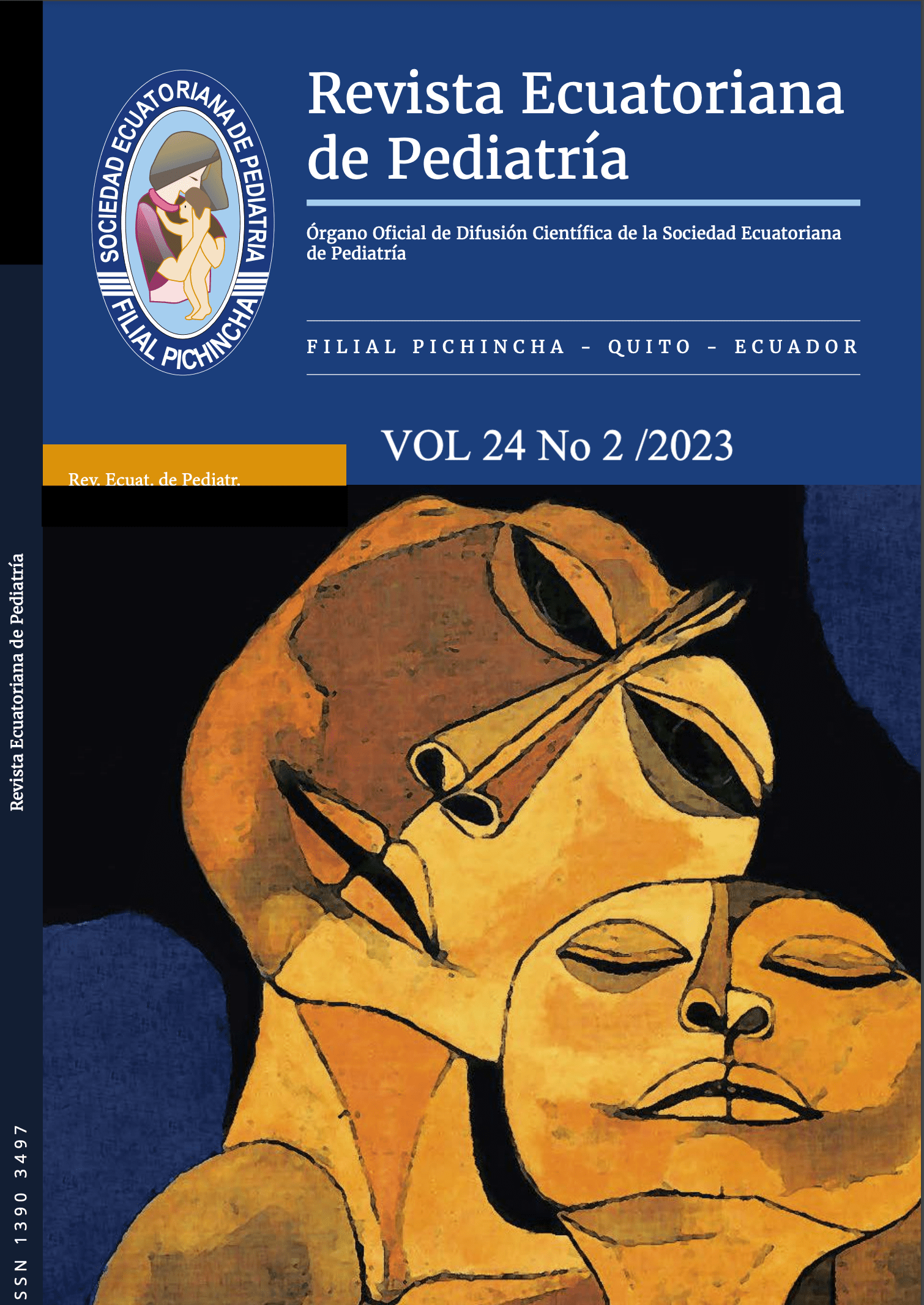Adaptation process in newborns at 2850 meters high and 2200 meters in the first two hours of life A multicenter observational study.
Main Article Content
Abstract
Introduction: The transition from intrauterine life confronts the newborn with factors that test their ability to adapt. Quito is located at 2,850 meters above sea level, with low barometric pressure and a consequent reduction in the partial pressure of oxygen, causing a more extended adaptation period. The objective of this study was to compare the adaptive process of the newborn at 2,850 meters (Metropolitan Hospital) and 2,200 meters (Hospital de los Valles) in the first two hours of life.
Methods: Observational, analytical, cross-sectional study with data from 591 patients. Quantitative variables were expressed with dispersion statistics, qualitative variables with frequencies, correlation with Chi2 and OR, with P-value <0.05 for statistical significance (95% CI). Logistic regression was calculated to establish a relationship between variables.
Results: Vital signs showed differences according to height (2850 vs. 2220 masl), heart rate (146 vs.144 bpm), respiratory rate (54 vs. 56 rpm), and SatO2 (89 vs. 90%). 85.6% of newborns at 2850 masl required oxygen; 79.8% were for more than two hours P < 0.05 (OR 4.7 IC95% 1.333-16.770). 52.6% were male, 56.9% were born at early term with an Apgar score of 8 at 1 minute (80%) and nine at minute 5 (94.8%).
Conclusions: The adaptation process to extrauterine life is longer in newborns at higher altitudes, with differences in vital signs and a more significant requirement for oxygen administration.
Downloads
Article Details

This work is licensed under a Creative Commons Attribution-NonCommercial-ShareAlike 4.0 International License.

